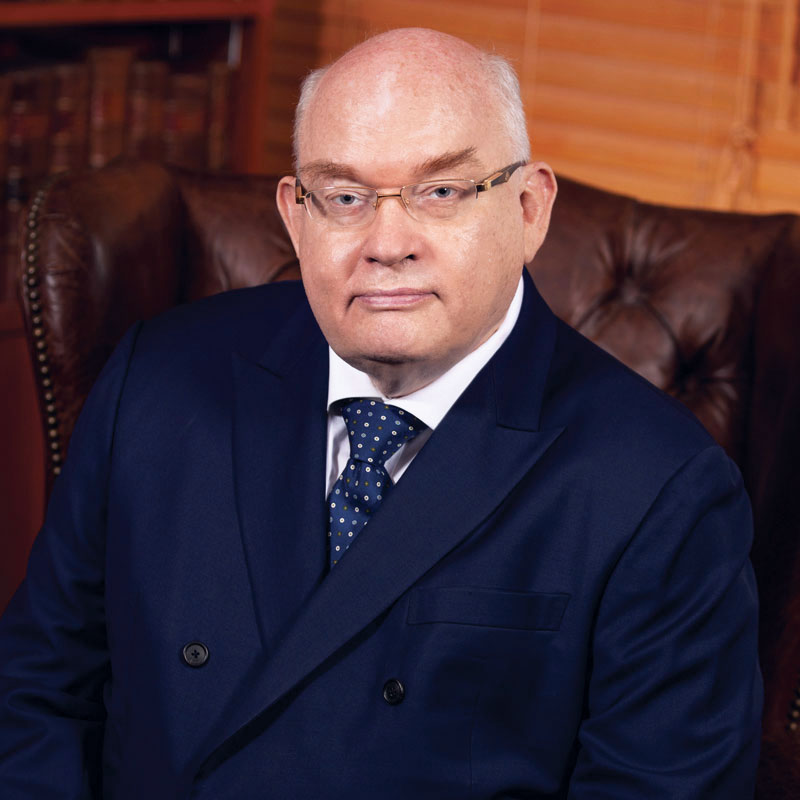Re X & Y (Surrogate Children: Transfer of Proceedings) [2023] 4 HKLRD 306, [2023] HKFC 146 (Philip Dykes SC)
Philip Dykes SC represented the petitioner wife in Re X & Y (Surrogate Children: Transfer of Proceedings) [2023] 4 HKLRD 306, [2023] HKFC 146.
Two children (X and Y) were born by surrogate mothers pursuant to two surrogacy agreements commissioned by the parties, who were husband and wife (H and W). Upon the breakdown of the marriage, the parties filed a Consent Summons to provide, among other things, that the custody, care and control of X and Y be granted to W, and H shall enjoy reasonable access to them. The major issue was whether the Family Court could grant custody of the surrogate children to W despite the fact that (i) a parental order or an adoption order had not been put in place to legalise the parent-child relationship; and/or (ii) the court had not sanctioned the expenses of the surrogacy agreements which were prohibited and unenforceable under Hong Kong law (the Issue).
Held, ordering the proceedings, including the rest of the Consent Summons (which concerned the custody, care and control of X and Y), be transferred to the Court of First Instance of the High Court, that:
- (1) The relevant considerations concerning transfer of cases from the Family Court to the Court of First Instance included whether there was a matter of public interest and whether there was special complexity. Given that surrogacy arrangement brought into play the questions of the legal position of a surrogate child, and his or her legal relationship with the commissioning parents as well as with the surrogate mother, there must be public interest in the Issue (FHM v KYM [2015] HKFC 24 applied). (See paras.16-19.)
- (2) The Court observed that most if not all of the cases involving surrogate children, unless they merely involved an application for an adoption order, had been transferred to the Court of First Instance for disposal, due to the complexity and/or the fact that the Court of First Instance enjoyed inherent jurisdiction that the Family Court did not have (Re D (Parental Order: s.12 Parent and Child Ordinance (Cap.429)) [2015] 1 HKLRD 229 considered). (See para.20.)
- (3) Three local ordinances, ie Human Reproductive Technology Ordinance (Cap.561), Parent and Child Ordinance (Cap.429) (the PCO), and the Guardianship of Minors Ordinance (Cap.13) (the GMO) were relevant to surrogate arrangements. The combined effect of the three ordinances on the facts of this case, according to the Court’s preliminary observation, would mean that (See paras.21-28.):
- (i) Despite the eggs of W were used, the surrogate mothers were instead regarded in law as the respective mother of X and Y. Their respective husbands (if any) were regarded in law as the father of X and Y;
- (ii) The purported relinquishment of the parental rights by the surrogate mothers was not recognised in Hong Kong (S v J (Surrogacy: Wardship) [2017] 5 HKLRD 129 considered);
- (iii) Although the respective surrogate mothers had warranted in the surrogacy agreements that they were “legally unmarried”, it was unclear if each of them had a male partner that fell within the meaning of s.10 of the PCO which defines the meaning of “father” where birth or pregnancy results from medical treatment;
- (iv) Assuming the respective surrogate mothers did not have a male partner as aforementioned, the legal position of whether H was presumed to be the father of X and Y was still unclear – on the one hand, H was named the father in the birth certificates, on the other hand, he could at the most be regarded as the father of X and Y illegitimately-born by the respective surrogate mothers. Under the GMO, the custody of X and Y rested with the respective surrogate mothers. H did not enjoy any custodian rights unless an order pursuant to s.3(1) or s.10 of the GMO was made in his favour by the court;
- (v) Since there was no evidence that H had obtained any orders under the GMO, H did not have the legal locus to agree to give the custody of X and Y to W.
- (4) In order for X and Y to fall within the definition of the “child of the family” under s.2 of the Matrimonial Proceedings and Property Ordinance (Cap.192) (the MPPO), the mere fact that they had been “treated” by the parties as the children of the family was not sufficient, X and Y should also fulfill the definition of “child” set out in s.2 of the MPPO, which had not expressly included surrogate children. Hence, it was doubtful whether the Family Court could grant the custody of X and Y to W (Re A (child of the family) [1998] 1 FLR 347 distinguished). (See paras.31-34.)
- (5) The interplay between the definition of “child” and the “child of the family”, and the requirements or restrictions set out in the aforesaid surrogacy-related ordinances were important and complex legal issues that, for the development of jurisprudence of family law in this jurisdiction, should be better disposed of by a higher court. The higher court could also provide better guidance on the Issues. (See paras.35-36.)
[The above is excerpted from the headnote to the report in HKLRD.]


